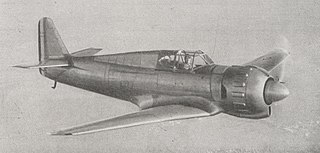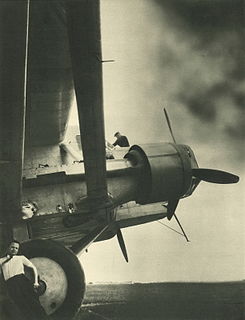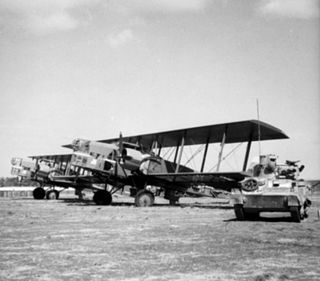
The Amiot 143M was a late 1930s French medium bomber designed to meet 1928 specifications for a bomber capable of day/night bombing, long-range reconnaissance and bomber escort.

The Amiot 354 was the last in a series of fast, twin-engine bombers which fought with the French Air Force in limited numbers during the Battle of France.

The Hispano-Suiza 12Y was an aircraft engine produced by Hispano-Suiza for the French Air Force before the Second World War. The 12Y became the primary French 1,000 hp (750 kW) class engine and was used in a number of famous aircraft, including the Morane-Saulnier M.S.406 and Dewoitine D.520.

The Arsenal VG-33 was one of a series of fast French light fighter aircraft under development at the start of World War II, but which matured too late to see extensive service in the French Air Force during the Battle of France.

The Bloch MB.150 was a French low-wing monoplane fighter aircraft developed and produced by Société des Avions Marcel Bloch. It featured all-metal construction, complete with a retractable undercarriage and a fully enclosed cockpit.

The Bloch MB.170 and its derivatives were French reconnaissance bombers designed and built shortly before the Second World War. They were the best aircraft of this type available to the Armée de l'Air at the outbreak of the war, with speed, altitude and manoeuvrability that allowed them to evade interception by the German fighters. Although the aircraft could have been in service by 1937, debate over what role to give the aircraft delayed deliveries until 1940.

The Potez 630 and its derivatives were a family of twin-engined aircraft developed for the French Air Force in the late 1930s. The design was a contemporary of the British Bristol Blenheim and the German Messerschmitt Bf 110.

The Farman F.220 and its derivatives were thick-sectioned, high-winged, four engined monoplanes from Farman Aviation Works. Based on the push-pull configuration proven by the F.211, design started in August 1925 and the first flight of the prototype was on 26 May 1932. The definitive F.222 variant was the biggest bomber to serve in France between the world wars. One variant was designed as an airliner.

Lioré-et-Olivier LeO 45 was a French medium bomber that was used during and after the Second World War. It had been designed for the new Armée de l'air as a modern medium bomber capable of performing independent strategic operations, unlike the majority of previous French bombers.

The SNCASE SE.100 was a French two-seat, twin-engined fighter which first flew in 1939. Mass production was planned to begin late in 1940 but the Fall of France prevented this.

The Potez 39 was a French two-seat single-engined parasol wing monoplane reconnaissance and observation aircraft of the 1930s.

The Lioré et Olivier LeO 25 was a bomber aircraft produced in France in the late 1920s.
The Bréguet 482 was a French four-engined bomber aircraft of the 1940s. It was designed prior to the outbreak of the Second World War, two prototypes were nearing completion when Germany invaded France in 1940, with one being flown after the end of the war as an experimental platform.

The SNCAO 200, sometimes written CAO.200, was a prototype French single seat fighter aircraft of the 1930s. It was a single engined monoplane intended to compete with the Dewoitine D.520, but was unsuccessful, only a single example being built.

The SNCAC NC.4-10 was a twin-engine floatplane torpedo bomber built in France in the late 1930s. It was one of several prototypes competing for an Admiralty specification but no contracts were awarded after the military lost interest in the type.
The SNCAC NC.130 was a French high-altitude research aircraft of the 1930s. A single example flew in 1939, but was destroyed during the Second World War.

The SNCAC NC-600 was a prototype French twin-engined long-range fighter aircraft, developed by SNCAC from the earlier Hanriot H.220 fighter. The type never entered service, with development being ended by the French surrender in June 1940.
The Potez 220 was a prototype French twin-engined, three-seat reconnaissance and army cooperation aircraft. Two examples were built in 1939, but no production followed.
The Potez 230 was a French lightweight single-seat, single-engined fighter aircraft. One prototype was built and flew in 1940, but no production followed, with the prototype being captured and shipped to Germany for study.















